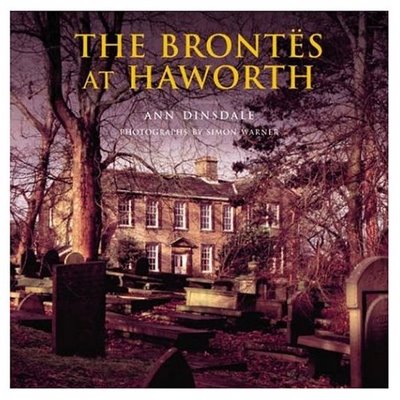It was a poem last time - see the archive. This time, here are some of the comments made by visitors in February and March. Thanks to Liz Walton for compiling them. If you wish to add your belated comment after a visit, please email it to hevelius@poriruacity.comFEBRUARYNICE COMMENTS:
Still feels like a family home
Very good exhibits and good value
Very professional
This will help me with my school work
The letters were very well presented
Liked the leaflet for children
Family tree was the best bit, it helped with my school work
An amazing, emotional place – not least because Daniel proposed to me upstairs
Well explained and maintained and a wonderful balance of information and preservation
The amount of seats was good – most museums make you tired and you fall down with exhaustion
Kids enjoyed upstairs activities
Best bit – virtual tour
It has inspired me to find out more about the Brontës, and read their books
CONSTRUCTIVE CRITICISM
Would have liked more linked arrows to the place – got lost twice
I loved it, but there were too many noisy schoolchildren
Very interesting and enjoyable, but would have been nice to have a proper tour
Liked it, but could be bigger
Short but interesting
Show a film of the Brontës' lives
It was great fun, but would have been nice to dress up (young girl from Leeds)
OTHER COMMENTS
I am about to read Wuthering Heights at school – seeing Heathcliff and Cathy’s gravestone have kind of ruined it, but I know how Emily was inspired.
The house is big, but the beds very small – why?
MARCHNICE COMMENTS:
Really interesting, excellent displays and friendly staff
People who work here are friendly and lovely
The numbered rooms are a good idea
I was amazed at how talented as artists they were
Great collection of letters
A wonderful place to show the children (teacher from Huddersfield)
Friendly Pam
I thought there was really good info and liked the Bonnell Collection
Very enjoyable to wander at one’s own pace
Nice and cheery
Exhibition panels clear and readable. Liked layout of rooms and items in them – airy (Visitors from the Wordsworth Trust)
CONSTRUCTIVE CRITICISM
You need to have loos!
More on laptop would have been useful as I cannot always see clearly
Need more text in Spanish
The atmosphere is wonderful – shame some parts have to be ill lit
Original artefacts should be here, with reproductions in the National museums
Would have appreciated guides to answer questions (American visitor)
Bit of classical music/piano?
I was shocked – came many years ago & it was the Brontës' home. The Brontës wouldn’t recognise it. It was stark and cold like the moors – such a disappointment. Where are all the little books, soldiers and Emily’s paintings?
Very impressed by its presentation. Would like to have some interactive presentations to show my students in Pakistan
Poor signs to get here (confusing)
It was great but too short






























